Whether you’re a gun collector, or you just love to pop a few off at the range, one thing unites all gun lovers…military-grade firearms are pretty freaking cool.
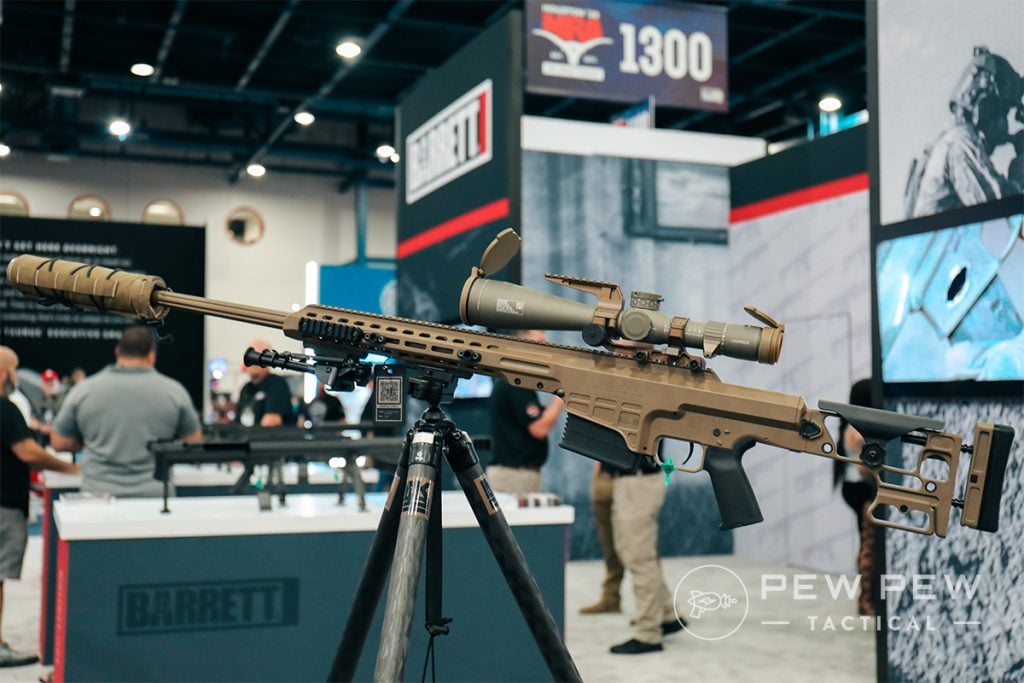
And while we all wish that we could hop behind a Mk 19 and start shooting, realistically, that’s just not a level of awesomeness that most civilians will experience.
While most of us won’t ever lucky enough to play with the big toys, there are plenty of guns based on military-issued firearms that we can get our hands on.
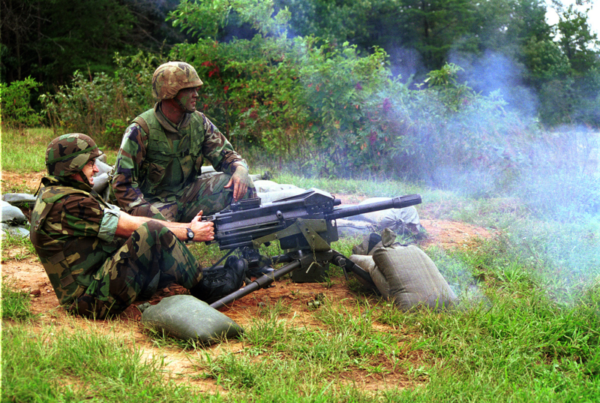
Today, we’re going to have a look at some cool military weapons (that aren’t AK-47s and AR-15s), and are perfectly legal for civilians like you and me to use.
THE QUICK LIST
-
Best Bullpup
-
Best Modern Rifle
-
Most Iconic
-
Best M4/M16 Clones
-
Best Shotgun
-
Best Pump Action Shotgun
-
Best Pistol
Table of Contents
Loading…
Best Civilian-Legal Versions of Military-Only Guns
1. Steyr AUG
The Steyr AUG is, hands down, the most iconic bullpup rifle ever created.
This Austrian-made weapon has seen combat in Iraq and Afghanistan and is used by countless defense forces around the world, including Taiwan, Ireland, Austria, Australia, and Argentina.
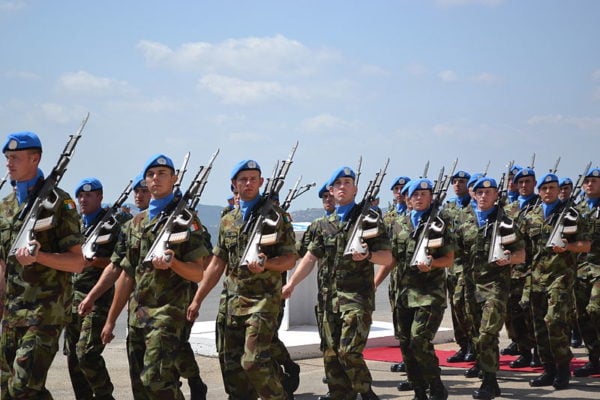
We even got our hands on one to review!
The original Steyr AUG is a combat rifle that shoots 5.56x45mm NATO rounds.
It’s known for its integrated 1.5x telescopic sight and unusual stock design, which can be configured for both right and left shooters. The military-grade Steyr AUG has three different firing configurations — semi-auto, 3-round bursts, and fully automatic.
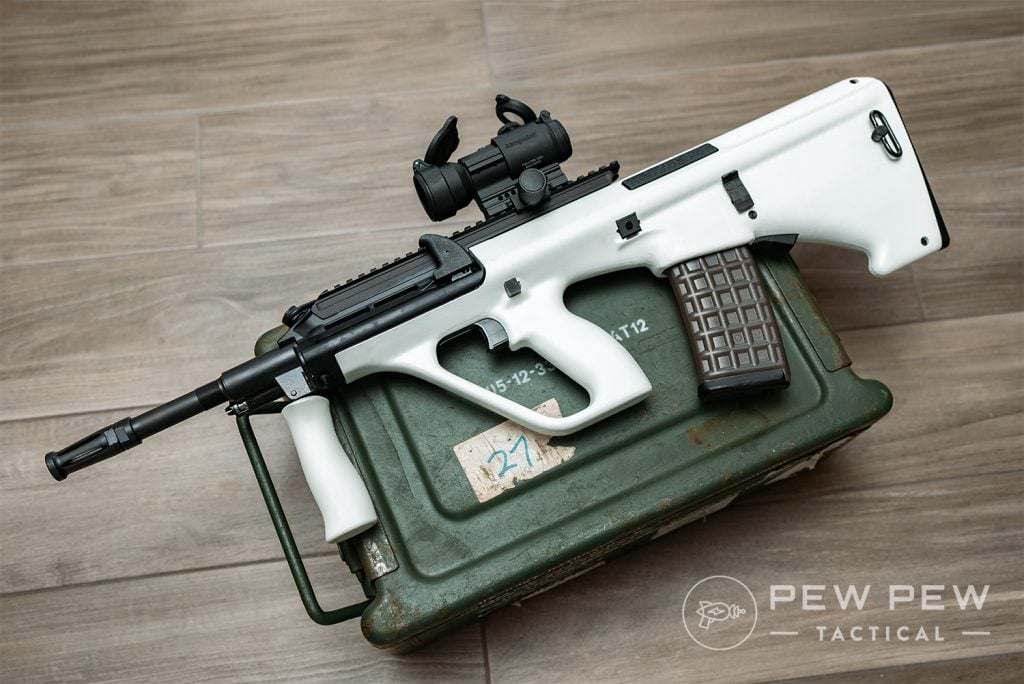
The civilian counterpart to the Steyr AUG is the AUG A3 M1.
It’s a semi-automatic version of the Steyr AUG carbine that was designed for the American market. This means that instead of the 20-inch barrel length that comes with the standard Steyr AUG, the A3 M1 is fitted with a 16-inch barrel for better maneuverability in close spaces.
While the civilian version of the Steyr AUG has a hefty price tag, the AUG A3 M1 is a great gun for anyone who loves tactical weaponry. And with an overall length of 28.15 inches, it’s easy to maneuver in close spaces like hallways and around corners.
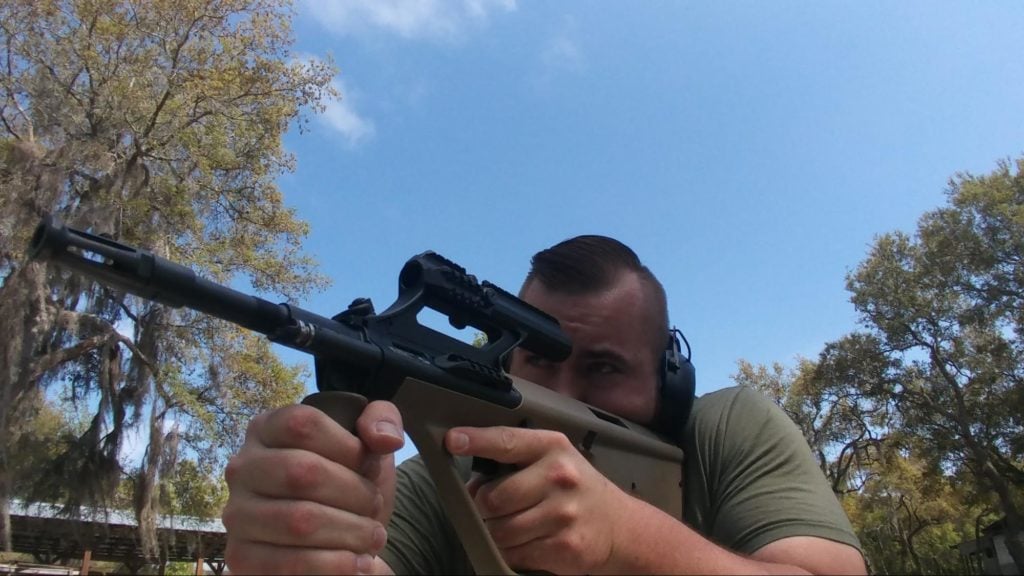
Despite its unorthodox look and feel, the AUG A3 M1 is quite comfortable to shoot. And since it can be configured for left-side ejection, southpaw shooters don’t have to worry about casings being ejected directly into their face.

The AUG A3 M1 fires the same 5.56x45mm NATO/.223 Rem cartridge as its military predecessor and also comes with your choice of a 1.5x or 3x integrated scope.
If you don’t want to use the factory scope, you can also choose a short rail (11 slots) or high rail (16 slots) configuration and mount your own scope or optical device.
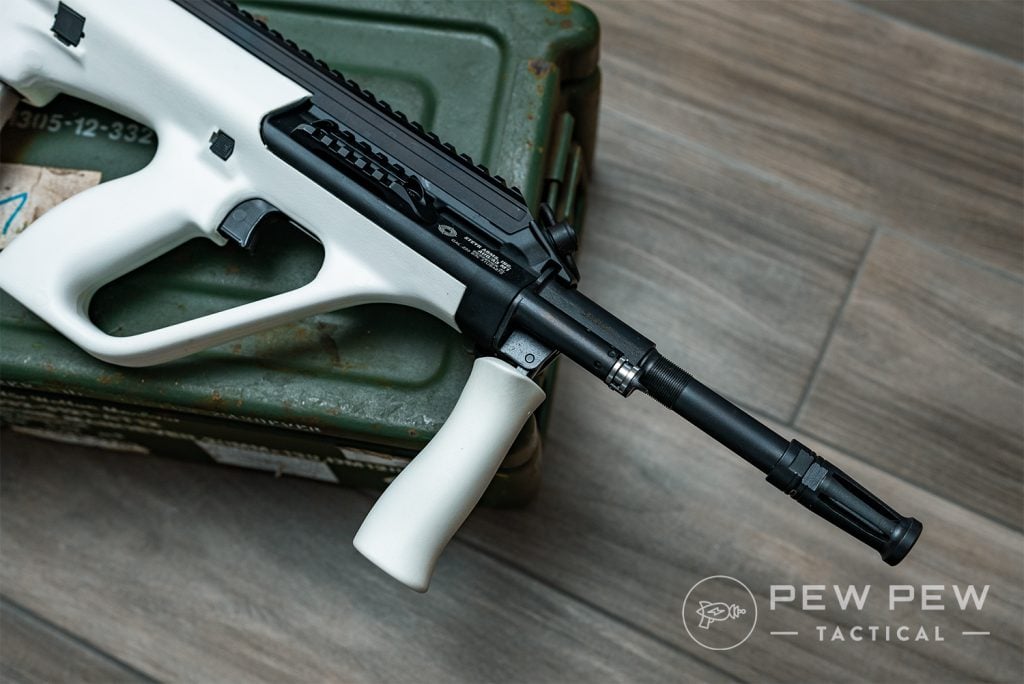
Overall, the AUG is an all-around great gun. Its versatility makes it useful whether you want a gun for home defense, for competitive shooting, or you just want to shoot something different from the AR platform.
Prices accurate at time of writing
Prices accurate at time of writing
-
25% off all OAKLEY products - OAKLEY25
Copied! Visit Merchant
Love bullpups? Check out more rifles and shotguns in our Best Bullpup article.
2. FN SCAR
With a name like Special Operation Forces Combat Assault Rifle, you already know the SCAR is going to be a top-of-the-line military weapon.
Created by FN Herstal, the SCAR comes in two variants: light — which shoots 5.56x45mm rounds — and heavy, which fires 7.62x51mm.
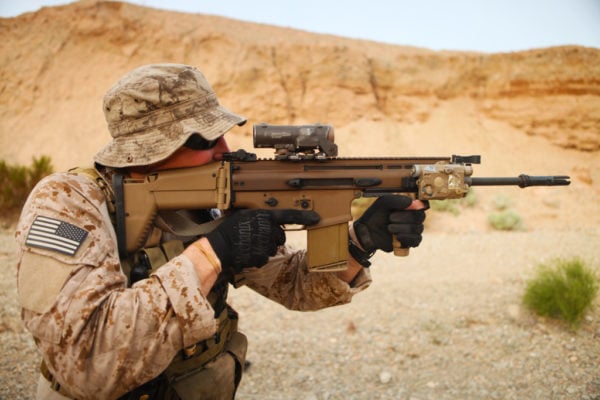
Both SCAR variants are successful battle rifles that saw combat in Iraq and Afghanistan and are used by militaries in a number of countries around the world, including South Korea, the United Kingdom, and Germany.
Additionally, some of the United States SOF forces also use the SCAR-H (Mk 17) in Afghanistan.
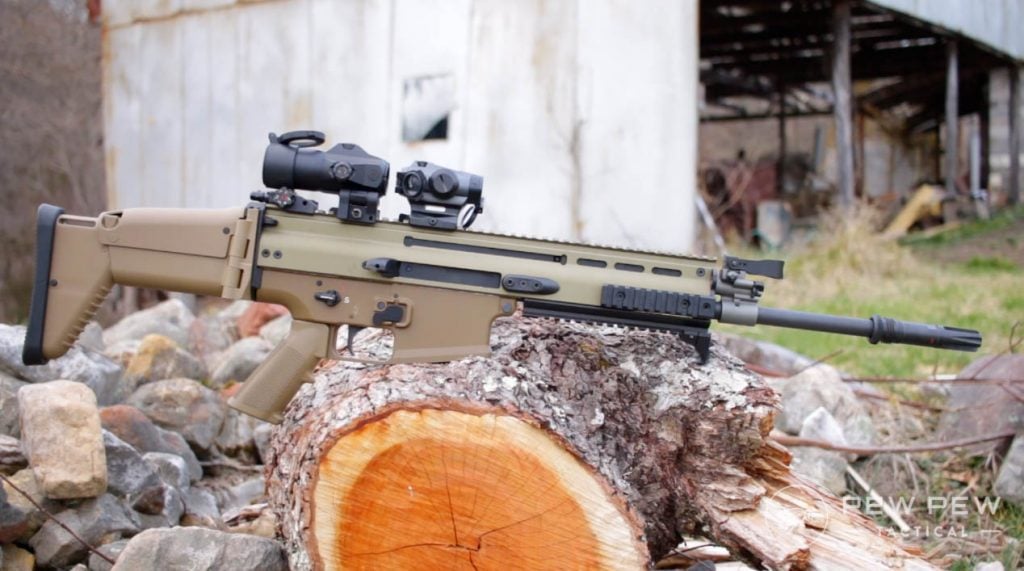
The civilian variants of the SCAR-L/H are the SCAR 16S, which shoots 5.56x45mm/.223 Rem and the SCAR 17S, which fires 7.62x51mm/.308 Win.
While neither of these guns comes fully automatic or with a grenade launcher, they are excellent guns for civilians and law enforcement alike due to their accuracy and easiness of shooting.
Prices accurate at time of writing
Prices accurate at time of writing
-
25% off all OAKLEY products - OAKLEY25
Copied! Visit Merchant
When it comes to design, there’s not much difference between the 16S and the 17S. Both are lightweight, have mil-spec barrels with a length of 16.25 inches, and are equipped with an integrated MIL-STD-1913 rail on the receiver for optics, as well as three other accessory rails for flashlights or laser sights.
The 16S comes with either a 10- or 30-round magazine, while the 17S comes with a 10- or 20-round variant.
We reviewed the SCAR 17S recently…come see what we thought in our full review or watch the video below!
3. HK MP5
There aren’t many modern submachine guns as iconic as Heckler & Koch’s MP5.
This combat weapon is one of the most popular submachine guns in the world, having been used by a number of different militaries and law enforcement agencies across the globe, including the German Army, the United Kingdom’s Special Forces, and the US Special Operations Command (SOCOM).
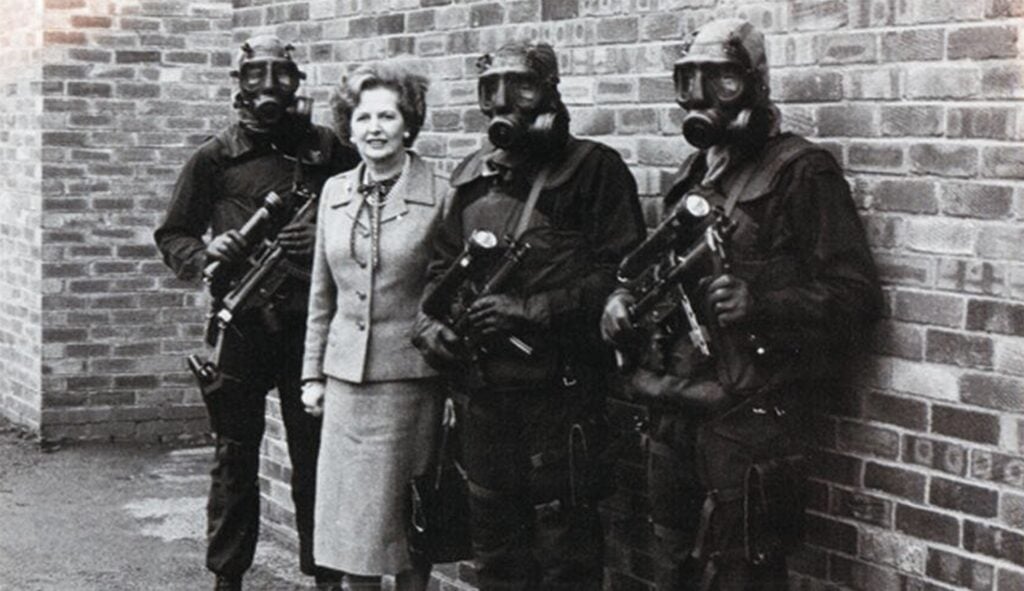
The original MP5 took 9x19mm rounds and was capable of firing full auto at a jaw-dropping rate of 800 rounds a minute. The MP5’s success spawned a number of different variations, including versions that fired 10mm and .40 S&W ammo.
The most original civilian version of the MP5 is a semi-automatic pistol-caliber carbine called the HK94. Since it was only manufactured between 1983 and 1989, you might have a hard time finding an authentic version floating around on the market.

The good news is that HK introduced a new generation of civilian MP5s in 2016 under the name SP5K. While the price tag is a lot of money for an oversized 9mm, the SP5K is an excellent gun for defense and sporting purposes.
The “K” in SP5K stands for Kurz, the German word for short. This is because it’s a little shorter and more compact than its MP5 predecessor. It also doesn’t come with a buttstock like the MP5, but instead comes with a one-point sling and has a sling loop at the endplate of the gun. However, if you’re set on having stock similar to the MP5, you can pay extra for a foldable buttstock to be added to the gun.
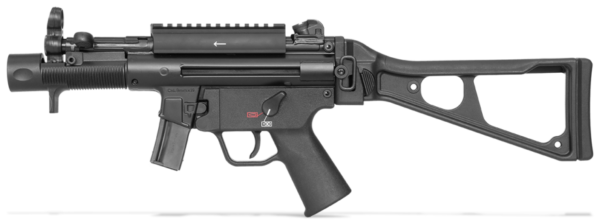
One of the cooler features of the SP5K that is actually a step up from the MP5 is the removable Picatinny rail that’s attached to the top of the receiver.
This makes mounting optics much easier than it would be for other MP5 variants, including previous civilian models and 9mm modifications.
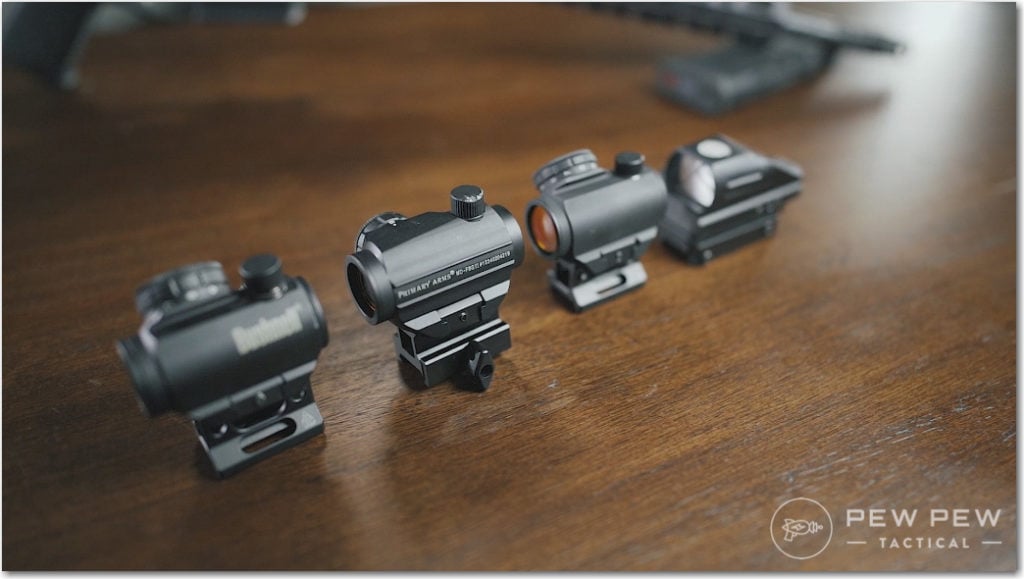
While it may look a little different than the MP5, the SP5K is built with the same overall design as its combat-grade predecessor.
Prices accurate at time of writing
Prices accurate at time of writing
-
25% off all OAKLEY products - OAKLEY25
Copied! Visit Merchant
It has the same roller-locking bolt mechanism, non-threaded 4-inch barrel, and fluted chamber of the original MP5. It also shoots just as smoothly, albeit a little bit slower.
If you’re into pistol-caliber carbines, the SP5K is one of the best on the market. It’s accurate, easy to handle, and incredibly fun to shoot. And with all HK products, you’re guaranteed quality craftsmanship every time.
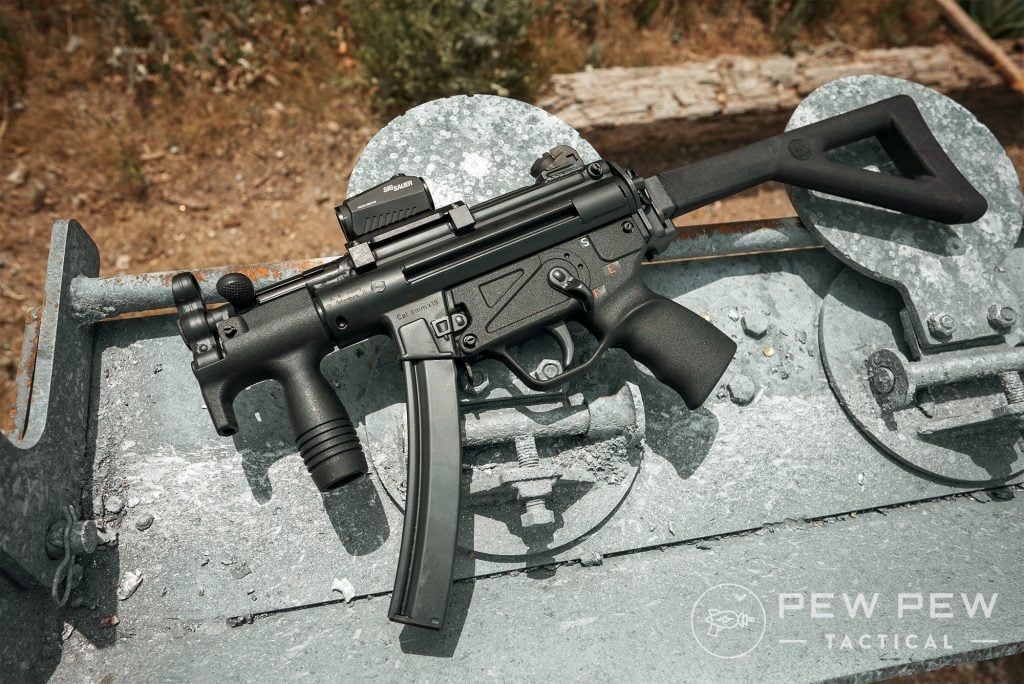
What do you think of the MP5? Rate it below!
4. FN 15 Military Collector M4 and M16
FN got some major military contracts before, during, and after the Global War on Terror. They produced the M249 and M240 famously, as well as the M16A4.
They know AR-15s well and have embraced the world of Military Collectors with the FN 15 Military Collector Series.
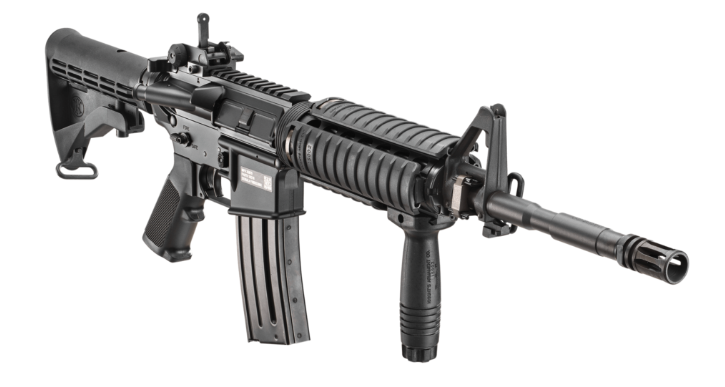
This series is made up of the M4 and M16 series rifles. Obviously, they are semi-auto-only clones of the original rifles.
The M4 features a 16-inch barrel as well. Other than that, these guns are dead on the money for those looking for an accurate clone of the M4 and M16 series.
Prices accurate at time of writing
Prices accurate at time of writing
-
25% off all OAKLEY products - OAKLEY25
Copied! Visit Merchant
They rock the heavy metal quad rails, the classic polymer black furniture, and the A-frame front sight base.
FN makes them to military spec, for better or worse. Both guns give the military collector an accurate, out-of-the-box replica of the weapons our soldiers and Marines have carried into conflicts across the globe.
5. Benelli M4
The Benelli M4 serves as the M1014 Joint Service Shotgun with the four branches of the United States military. Since 1999, it’s been the premier combat shotgun for close-quarter fighting.
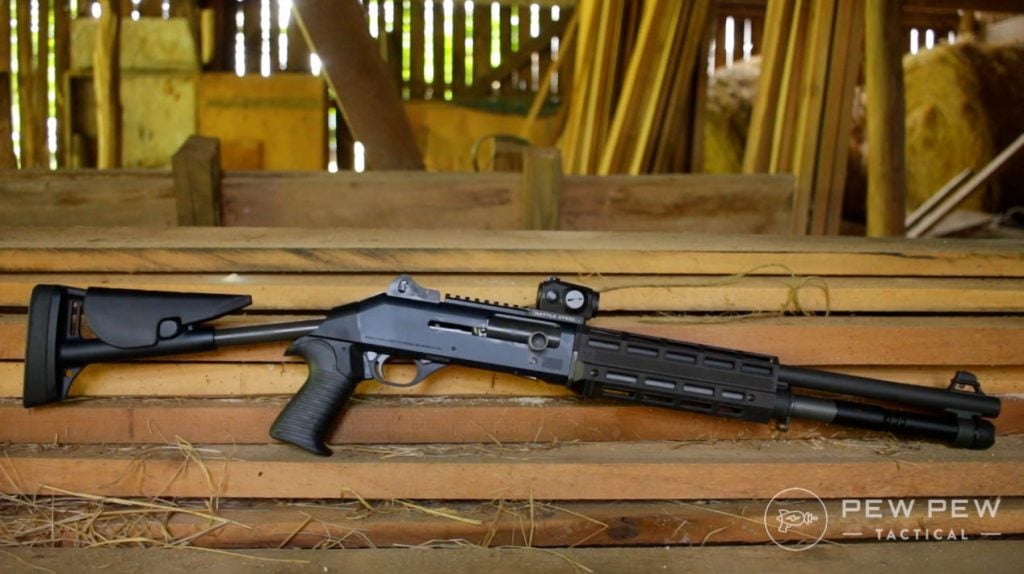
Benelli makes an M1014 clone, but unfortunately, the stock’s fixed, and the magazine tube is cut off at five rounds.
I would purchase the Benelli M4 with the field stock and the necessary parts to make the weapon 922R legal — then purchase a collapsing stock and 7-round tube. I used Freedom Fighter Tactical for my 922R needs and hunted down the stock painstakingly.
The M4 uses a gas-operated system with two pistons to cycle the action. It’s a self-regulating and self-cleaning system that works in the worst conditions possible.
Prices accurate at time of writing
Prices accurate at time of writing
-
25% off all OAKLEY products - OAKLEY25
Copied! Visit Merchant
This shotgun changed the perception of combat shotguns and the perception of semi-auto shotguns in general due to their raw reliability.
6. Mossberg 590A1
Mossberg built the 590A1 to specifically address the needs of the entire military. This pump-action shotgun features a number of features that make it soldier-proof, for lack of a better term. This includes a thick-walled barrel, a bayonet lug, and reliability in harsh environments.
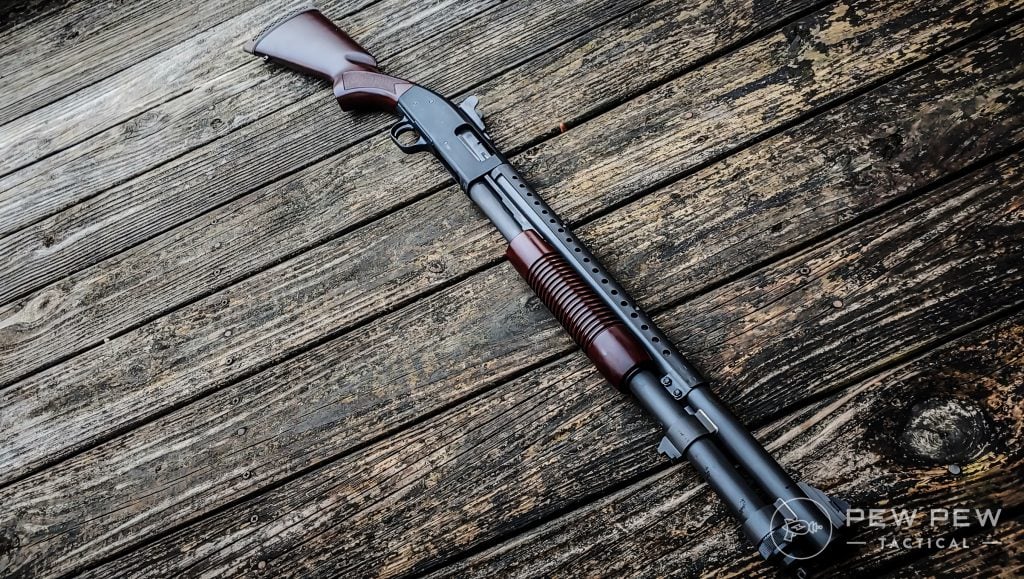
When it comes to hall-of-fame combat shotguns, the Mossberg 590A1 ranks highly. It’s super simple but incredibly powerful.
Mossberg happily makes numerous variants of the 590A1 shotgun to represent the various models employed by numerous military forces.
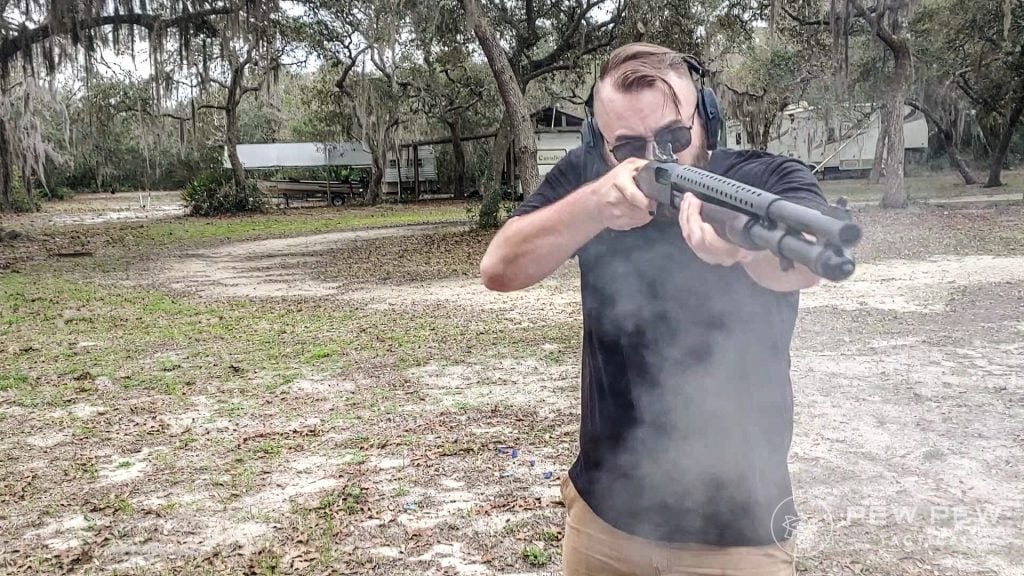
My favorite is the full-length, 20-inch, 8-shot model with a bayonet lug and ghost ring sights. It’s hard to get meaner than bayonet equipped 12-gauge shotgun.
Prices accurate at time of writing
Prices accurate at time of writing
-
25% off all OAKLEY products - OAKLEY25
Copied! Visit Merchant
The Mossberg series are the only pump-action shotguns to pass the Army’s 3443 shotgun testing.
7. Sig M17/M18 Series
I remember meeting with Sig at SHOT the day after the U.S. Army declared the P320 the winner of the modular handgun contest. Needless to say, they were excited, and Sig’s booth was buzzing.
The M17 and M18 series are the official names and configurations of the United States military.
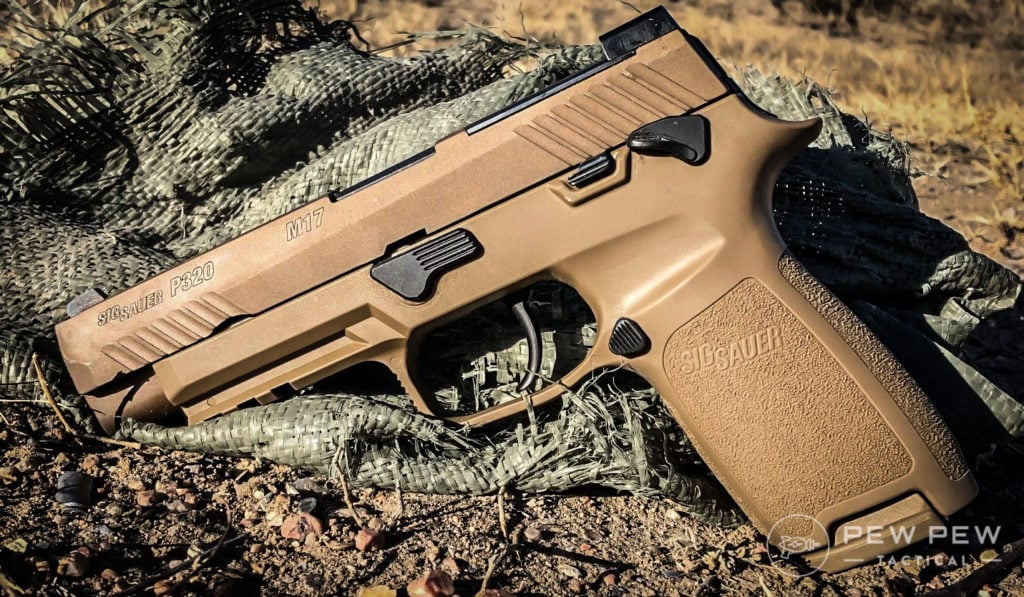
While the M17 gives shooters a classic full-sized duty pistol, the M18 is a more concealed model with a shorter slide. The only difference is the black controls on the civilian models and the coyote controls on the military variants.
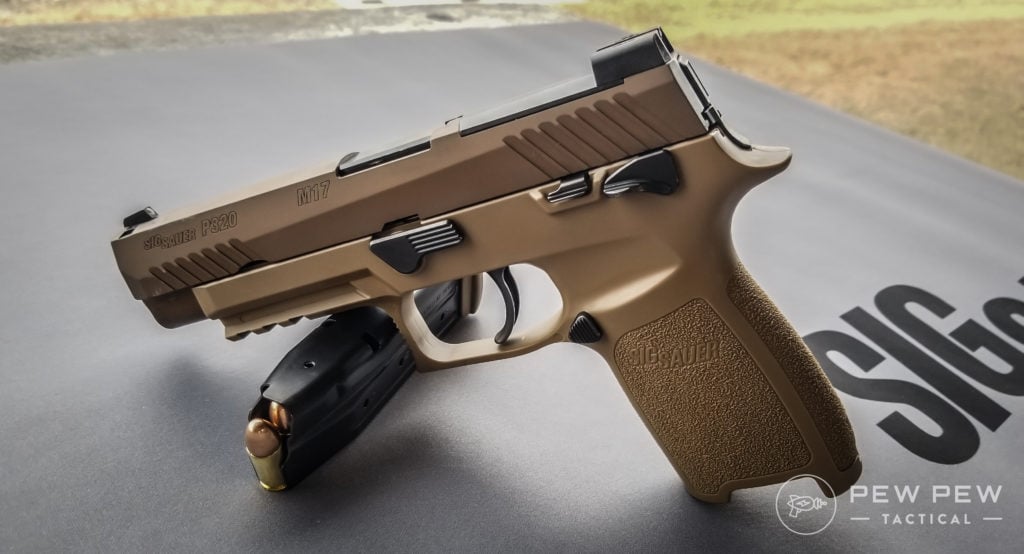
A little Cerakote, and you’ll have a one-for-one replica of the military models.
The P320 and M17/18 series are polymer frames, striker-fired, 9mm handguns with optic compatibility, and a rail system. It’s a very modern handgun series well suited for a modern military force.
Prices accurate at time of writing
Prices accurate at time of writing
-
25% off all OAKLEY products - OAKLEY25
Copied! Visit Merchant
8. Barrett M82A1
Oh, when you wanna go big, you wanna go Barrett.
Barrett’s famed .50 caliber rifle series have been big hits in the military world. They serve as anti-material rifles capable of taking out lightly armored vehicles and heavily entrenched targets and reaching out quite far to deal with threats both big and small.
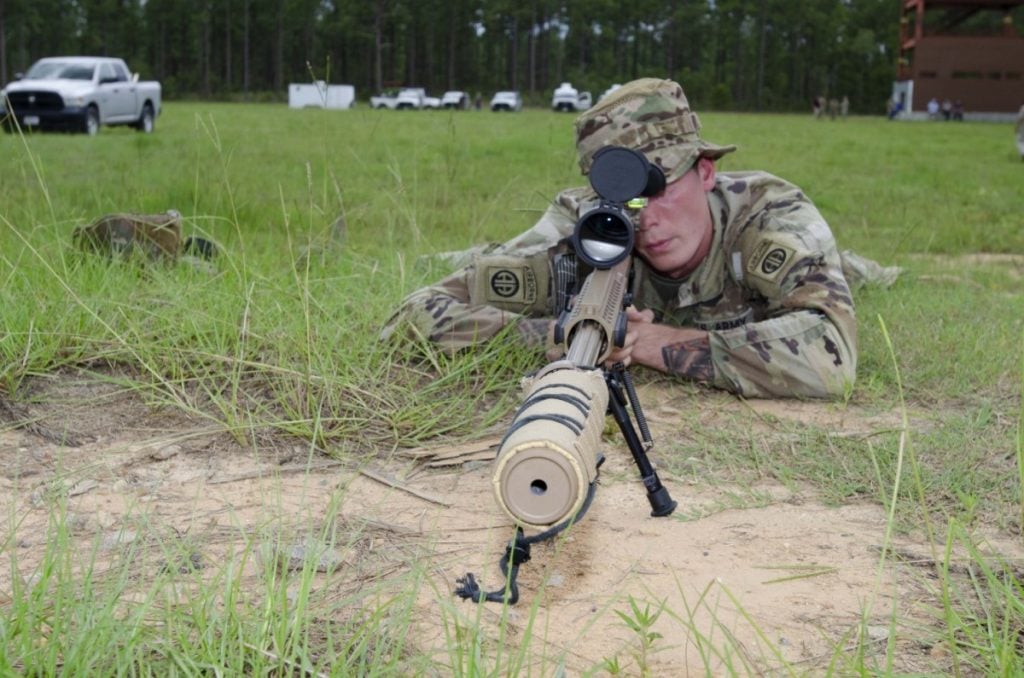
Barrett is a very 2A-friendly company and has no problems selling its firearms to the civilian market.
What the military calls the Special Applications Scope Rifle, the rest of the world calls the M82A1.
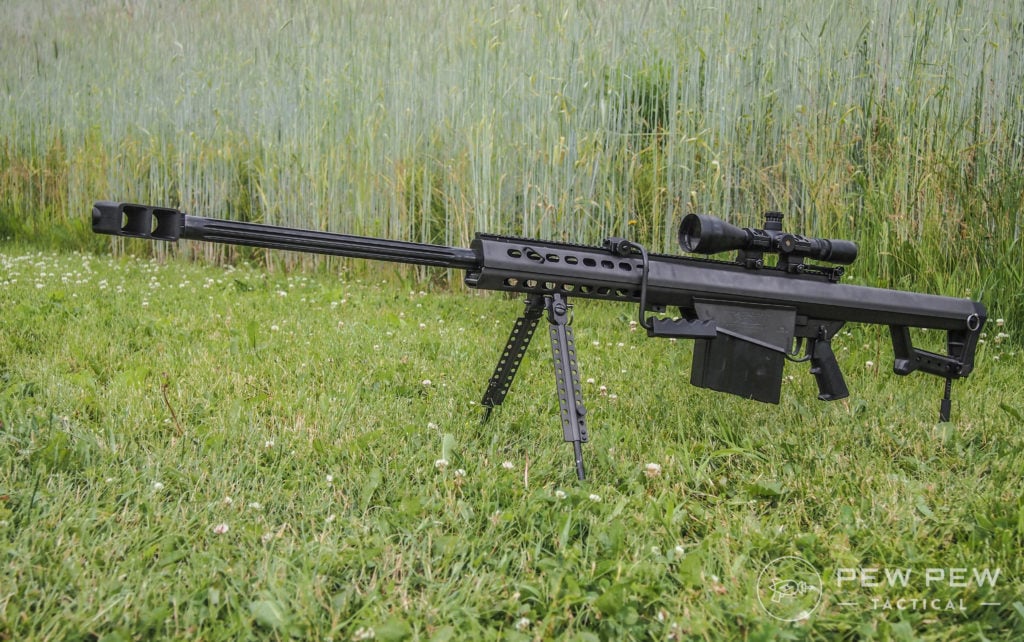
What we get with the M82A1 is a semi-automatic, magazine-fed, recoil-operated, .50 BMG rifle. The Barrett provides 30 pounds of fun.
If you’ve never shot a .50 caliber rifle, you should find a way to remedy that. It’s hard to picture a time when I smiled more when shooting than when I hit a steel target nearly a mile out with an M82A1 and the help of a very skilled (and patient) spotter.
Prices accurate at time of writing
Prices accurate at time of writing
-
25% off all OAKLEY products - OAKLEY25
Copied! Visit Merchant
Final Thoughts
The truth is that we’ve only begun to scratch the surface of civilian conversions of military-grade firearms.
There are a number of different pistols, rifles, and carbines out there. Which type of combat weapon is your favorite?
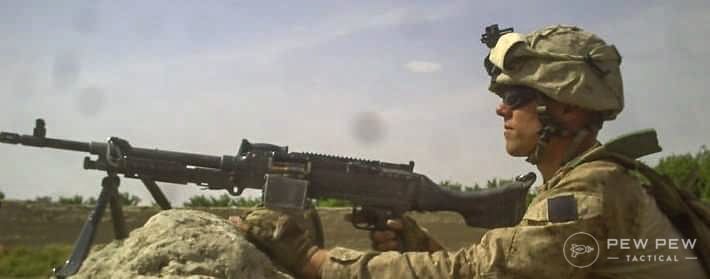
What military-grade hardware do you love? Let us know in the comments! Interested in some more military gear you can own? You’ll want to read How to Buy a Tank! Or check out our recommendations on military surplus guns!

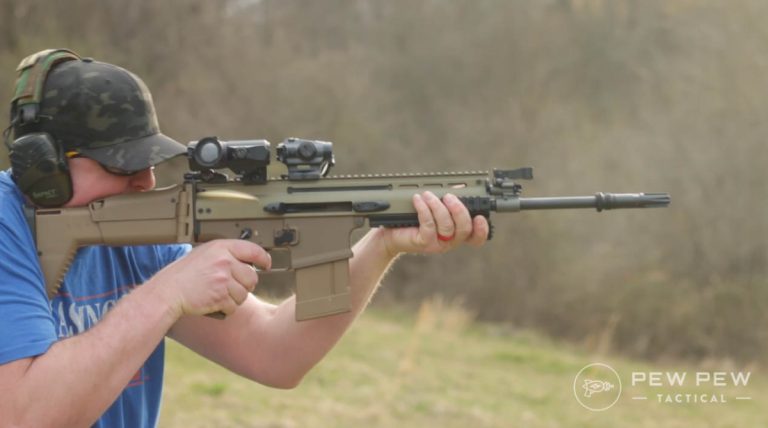















11 Leave a Reply
Food for thought.
The right of the people(not citizen) to keep and bear Arms(weapons of a warrior) shall not be infringed.
Where do you find weapons of a warrior? on the battle field.
this is a lawful right.
Citizens were not mentioned until 79 years later in the 14th amendment and they were given civil rights( aka government benefit).
a legal right that the government decides who gets the benefits.
Don't forget the sr-25, the m110 and the mk 22 mrad, also the macmillan tac-50
Don't forget about this one! Hope you have deep pockets though...
FN M249s
Way out of my fiscal league, all of it. Don't even give me one. I couldn't afford the maintenance. :-)
I wouldn't mind the Mossberg. Wouldn't put a bayonet on it, though. Or would I?
Same boat here. Guess I'll be sticking with my AR. These are all nice to look at, but my retiree's income doesn't come anywhere close to do more than look. Especially in Biden' Economy. I can barely afford to shoot what I have.
I wished I would have saved my money and bought a CHEYTEC 408 !!!
Just don't understand the appeal of the SCAR. If I'm going to spend 3k+ on a rifle it better shoot better than 1 moa and not look like women's footwear. SCAR fails both criteria.
Eric nice informative pcs. You do a great job. Quick Q. The gent demonstrating the $3000+ AR-10 lookalike.....how much more accurate is that rifle than a $2200 AR 10. Tks BR
Hi Bill, it will be hard to say if it is even more accurate. A lot of times the prices go into non-accuracy elements...or even marketing!
Man, I love the feel and aesthetics of the Mp5, but that reproduction just sucks. All the aesthetics are wrong, and that tiny little mag just looks rediculus. A great article tho, love the SCAR!
No mention of M249S?